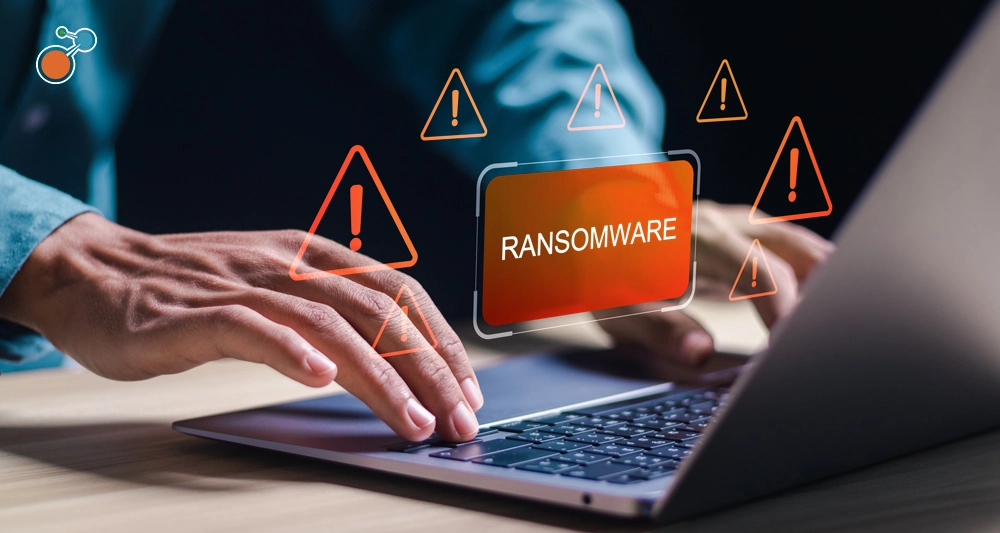Wenn Sie auf der Suche nach einem neuen RMIS-Anbieter sind, haben Sie wahrscheinlich Ihre funktionalen Interessengruppen identifiziert, Ihre Anforderungen dokumentiert und Ihre Probleme im Detail diagnostiziert. Jetzt sind Sie bereit für den spaßigen Teil: die Auswahl eines RMIS-Anbieters, der perfekt für Ihr Unternehmen ist. Wenn Sie auf eine Ausschreibung antworten, können RMIS-Anbieter viele Behauptungen aufstellen – die wahr oder unwahr sein können. Wie können Sie die Merkmale, Funktionen und Versprechen durchschauen, um den Gewinner zu ermitteln? Wie können Sie zwischen den Zeilen lesen, um die Software zu finden, die Ihnen langfristig den besten Nutzen bringt? Im Folgenden finden Sie fünf Kategorien, die Ihnen helfen, das RMIS zu finden, das Ihren Anforderungen, Wünschen und Zielen am besten entspricht:
 Datenqualität
Datenqualität
Eine der Hauptbeschwerden über Tabellenkalkulationen und uneinheitliche Systeme ist die mangelnde Datenqualität. Jeder kann Daten in einer Kalkulationstabelle überschreiben, ohne dass es jemand merkt – bis diese fehlerhaften Daten für eine wichtige Geschäftsentscheidung verwendet werden.
Ein RMIS minimiert Fehler bei der Dateneingabe, indem es die Benutzer durch einen rationalisierten Erfassungsprozess führt. Änderungen und Aktualisierungen können sofort, an einem Ort und zu einem Zeitpunkt vorgenommen werden. Und alles wird dokumentiert, damit Sie wissen, wer welche Änderungen vorgenommen hat und warum. Suchen Sie nach:
- Konsistente Datenerfassung: Bietet der RMIS-Anbieter standardisierte Vorlagen, intuitive Formulare oder automatisch ausgefüllte Felder, um Daten konsistent und vollständig zu erfassen?
- Rationalisierte Arbeitsabläufe: Kann das System Ihre Arbeitsabläufe rationalisieren und doppelte Dateneingaben vermeiden, um Zeit zu sparen und Fehler zu reduzieren?
- Datenüberprüfung: Überprüft das RMIS die Daten automatisch, wenn sie eingegeben werden? Kann es fehlende, inkonsistente oder außerhalb des zulässigen Bereichs liegende Dateneingaben erkennen?
- Datenintegration: Wird der RMIS-Anbieter Ihre Daten, die in das System eingehen, bereinigen und konsolidieren – oder wird dies von Ihnen erwartet? Kann das System nahtlos mit all Ihren Versicherern/TPAs zusammenarbeiten?
 Berichte & Analysen
Berichte & Analysen
Die manuelle Extraktion von Informationen aus riesigen Tabellenkalkulationen kann so zeitaufwändig sein, dass der Bericht veraltet ist, bevor er verteilt werden kann. Ein RMIS sollte in der Lage sein, unglaublich komplexe Daten mit wenigen Klicks in sehr anschauliche Berichte umzuwandeln – ganz ohne spezielle datenwissenschaftliche Kenntnisse oder IT-Beteiligung. Sinn und Zweck des Systems ist es, Ihnen zu helfen, Ihre Risiken in Echtzeit zu verstehen, um fundiertere Entscheidungen zu treffen. Suchen Sie nach:
- Eingebaute Berichte: Welche Berichte sind standardmäßig verfügbar? Muss der RMIS-Anbieter Ihre benutzerdefinierten Berichte programmieren – oder können Sie das, was Sie brauchen, einfach selbst erstellen?
- Datenvisualisierung: Welche Dashboards und Grafiken stehen zur Verfügung, um die Geschichte Ihrer Daten zu zeigen und zu erzählen? Können Sie sich durch das Dashboard klicken, um tiefere Details zu erfahren?
- Prädiktive Analytik: Kann das RMIS Ihnen helfen, „Was wäre wenn“-Fragen zu beantworten? Kann das System z. B. potenziell kostspielige Forderungen für ein frühzeitiges Eingreifen kennzeichnen?
- Zusammenarbeit und gemeinsame Nutzung: Können Benutzer problemlos Daten austauschen und gemeinsam an Aktionen arbeiten, ohne die Plattform zu verlassen?
 Automatisierung
Automatisierung
Wenn es darum geht, Risiken vorzubeugen, ist Geschwindigkeit alles. Und Automatisierung ist der Schlüssel zur Schnelligkeit. RMIS-Anbieter sollten zeigen, wie das System Arbeitsabläufe und Datenerfassung automatisiert, damit Sie weniger Zeit mit Routineaufgaben und mehr Zeit mit strategischen Maßnahmen verbringen können, die einen langfristigen Mehrwert schaffen. Versuchen Sie zu automatisieren:
- Routineprozesse und Arbeitsabläufe für Verlängerungen, Schadensverwaltung, Policenmanagement, Vorfallmanagement und mehr.
- Datenkonsolidierung zur nahtlosen Erfassung von Daten von allen Beteiligten und Systemen – einschließlich Versicherungsträgern, TPAs, Anbietern, Maklern usw. – und diese formatiert in Berichte einfließen zu lassen.
- Benachrichtigungen und Erinnerungen, damit sich niemand daran erinnern muss, immer wieder manuell nachfassen zu müssen.
- Berichte, um schnell Echtzeitdaten und Einblicke für wichtige Entscheidungen zu erhalten.
 Sicherheit
Sicherheit
Sicherheit ist ein wichtiges Thema, und es ist wichtig, die Angaben eines RMIS-Anbieters genau zu prüfen. Erfahren Sie, wie Ihre Daten gespeichert und geschützt werden. RMIS-Anbieter sollten einen detaillierten Sicherheitsplan für Zugangskontrollen, Firewalls und Datenzentren vorlegen. Nicht erkannte Probleme können sich auf Ihren Projektzeitplan und Ihr Budget auswirken. Suchen Sie nach:
- Kontrolle des Benutzerzugriffs, einschließlich Verschlüsselung, Audit-Protokolle und Firewalls
- Globale Rechenzentren, die mit einem Defense-in-Depth-Ansatz physisch gesichert sind und über einen vollständigen Disaster Recovery-Plan verfügen
- Zertifizierungen durch unabhängige Dritte, wie SOC 2 Typ 2, SSAE 16 Typ 1 und ISAE 3401
 Service
Service
Die Technologie ist zwar wichtig, aber Ihr Erfolg hängt auch von der Auswahl des richtigen RMIS-Anbieters ab, der Ihnen bei jedem Schritt zur Seite steht – bei der Implementierung, der Übernahme und darüber hinaus. Suchen Sie nach:
- Ein Team, das Sie mögen und dem Sie vertrauen. Fühlen Sie sich wohl mit den Menschen, mit denen Sie zusammenarbeiten werden? Hat das Team wirklich ein offenes Ohr für Ihre Bedürfnisse und Anliegen – und findet es Lösungen, die funktionieren?
- Ein klar definierter Implementierungsplan. Hat der RMIS-Anbieter einen realistischen Zeitplan für die Implementierung vorgelegt? Ist genügend Zeit eingeplant, um das System gründlich zu testen, die Benutzer zu schulen – und mit eventuellen Überraschungen umzugehen?
- Ressourcen für technische Unterstützung. Welche Art von Unterstützung bietet der RMIS-Anbieter? Und wie lange ist die typische Reaktionszeit? Wie viele Supportstunden sind in Ihrem Vertrag enthalten?
- Nachgewiesene Kompetenz: Vergewissern Sie sich, dass der RMIS-Anbieter nachweislich über Fachwissen in den Bereichen Technologie, Risiko und Versicherung verfügt – und dass er die Langlebigkeit und die Ressourcen hat, um mit Ihnen den Weg zu gehen.
RMIS-Anbieter versprechen viel von Flexibilität, Zuverlässigkeit und Integration. Aber sobald Sie an der Oberfläche kratzen, sind viele dieser Versprechen leer. Machen Sie Ihre Hausaufgaben, um spätere schmerzhafte und teure Überraschungen zu vermeiden. Die Sorgfalt, das Interesse und der echte Respekt, den der RMIS-Anbieter Ihnen während des Kaufprozesses entgegenbringt, sind ein hervorragender Hinweis auf das, was auf Sie zukommen wird.
Sind Sie bereit, eine RFP für ein RMIS zu entwerfen? Laden Sie diese RMIS-Ausschreibungsvorlage mit den wichtigsten RMIS-bezogenen Fragen herunter, die Sie in Ihre Angebotsanfrage aufnehmen sollten – und testen Sie das Risk Management Information System von Riskonnect.




